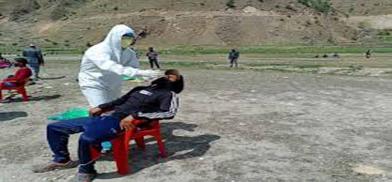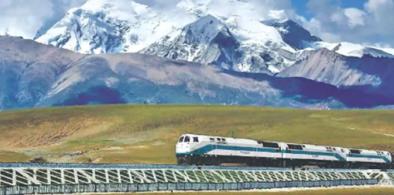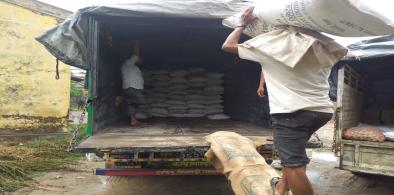Far-western province stops COVID-19 tests
The Far-western Province has written to quarantine centres and hospitals to stop PCR testing for five days because of a huge backlog of throat and nasal swab samples that have accumulated in labs in the region because of limited testing capacity

Kathmandu: The Far-western Province has written to quarantine centres and hospitals to stop PCR testing for five days because of a huge backlog of throat and nasal swab samples that have accumulated in labs in the region because of limited testing capacity.
The province has been overwhelmed by a huge influx of Nepalis returning from India in the past two weeks who have to be been quarantined and tested. However, only 1 of Nepal’s 20 government labs doing RT-PCR tests is in the Far-western Province which has the highest numbers of returnees in quarantine camps.
In the letter to stakeholders, the Health Directorate of the province said the region’s single testing machine could handle only 250 samples a day, and there was already a backlog of 1,083 swabs in the queue.
‘Since the number of samples is expected to grow with the rising numbers in quarantines, and since there is the possibility of the samples being damaged if stored for many days, we request you not to collect any swab samples for the next five days,’ the letter says.
Public health experts blame the central government for waiting too long after the lockdown went into effect nearly three months ago to import enough testing machines and kits, and adopting a faulty strategy that relied on unreliable rapid diagnostic test (RDT) kits.
However, Health Ministry spokesperson Bikash Devkota in his daily COVID-19 briefing on Saturday said: “It is true that there is a backlog because of the shortage of testing kits and faulty machines, but we are in the process of addressing this problem with automatic machines that will speed up the results.”
However, critics say the government had plenty of time to anticipate the numbers of returnees from India and to prepare proper quarantine camps and enough testing capacity. They say thousands of people in the quarantine facilities who had their throat and nasal samples taken will now be in a state of nervous anticipation because of the delays, while others will have to stay longer in the facilities before they are allowed to go home.
Nearly all the 168,000 people in quarantine centres across the country, but the total capacity of all such facilities 117,000. Most are recent returnees from India, and Far-western Province alone has 60,000 people in various camps. Many have already spent two weeks in quarantine in India while waiting for the sealed border to open. Once they are released from the centres, most of them will have to go into local isolation centres in their own districts.
Over the weekend the 20 government labs only did about 4,000 tests, and estimates show that at the rate the testing is going on, it will take 40 days to conduct PCR tests on everyone. And this is not counting the estimated 30,000 overseas Nepalis who are expected to be returning to Kathmandu airport in the coming month.
On Friday, the government revealed new guidelines about who in the quarantines should be tested: only those from a community where the virus has spread, those in isolation, or people who have come in close contact with an infected person. However, since 300 more confirmed cases are appearing every day, there is also a need to increase PCR testing once they are out of isolation to confirm they are virus-free.
The second category eligible for tests are frontline workers, and security officials. The government will now release people from quarantine to make space for new arrivals after giving them RDT tests. Public health experts say this is an invitation for disaster because it increases the risk of infected people going back to their districts with the virus.
The government said it had to make this guideline because there were ‘many people getting unnecessary tests’. This, even though the prime minister himself said two weeks ago that 600,000 people in Nepal would be tested. So far, only 88,366 people have done PCR tests and 132,966 have had RDTs.
Proof that RDTs are unreliable is the case of a young man who died soon after being released from quarantine in Surkhet on Friday after RDT gave him a negative test result. A post-mortem PCR test showed him to be positive for the virus.
Public health experts say that with the pressure to relax the lockdown, the only option for the government is to go for mass PCR testing of those quarantined, test them twice, and let them return home if negative at the end of two weeks, and isolate them if they are positive. But it does not look like the government has anywhere the numbers needed to do that scale of testing.
Said one physician in Dhangadi who did not want to be identified: “This government has bungled it, it squandered the chance given by the lockdown to get its act together, and now it is compounding the problem by letting people go home without tests.”
https://www.nepalitimes.com/latest/far-western-province-stops-covid-19-tests/





















Post a Comment